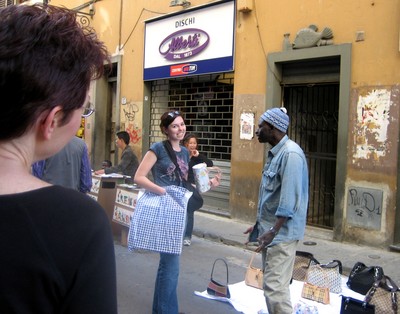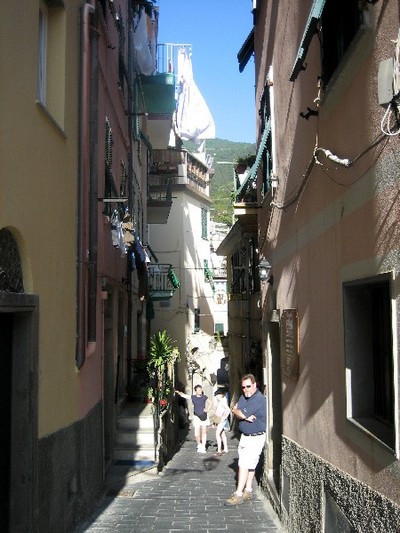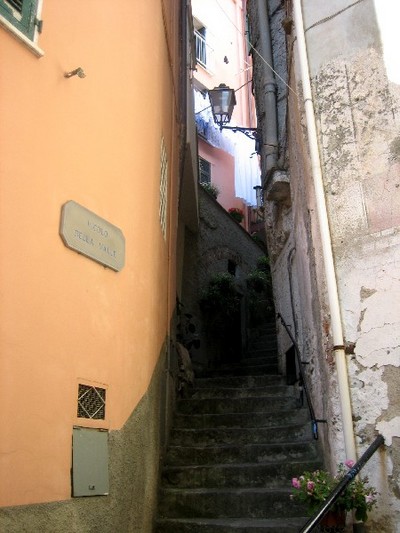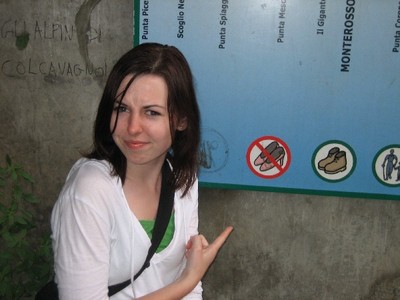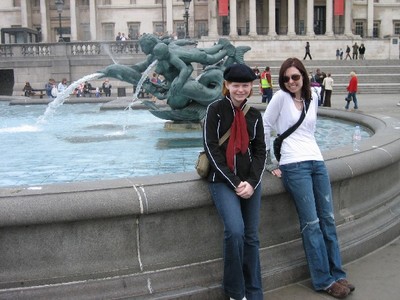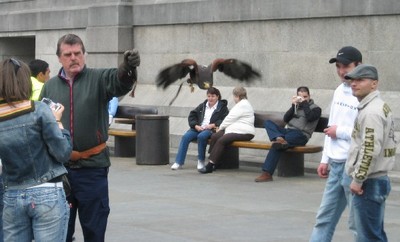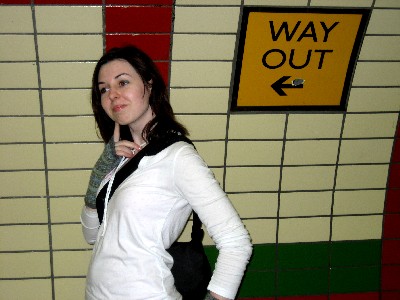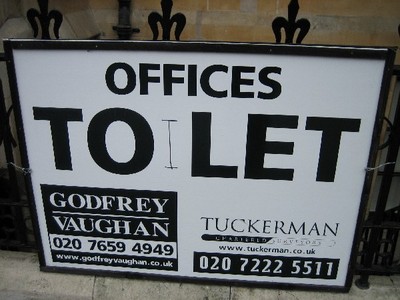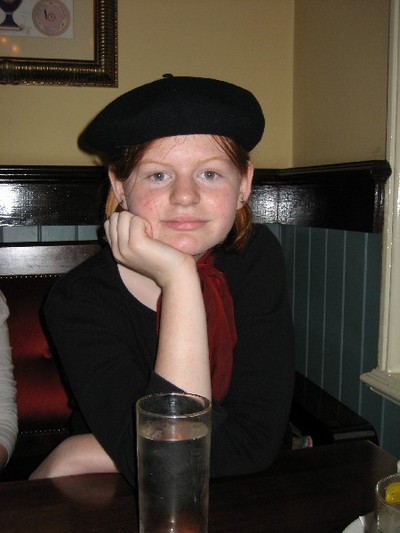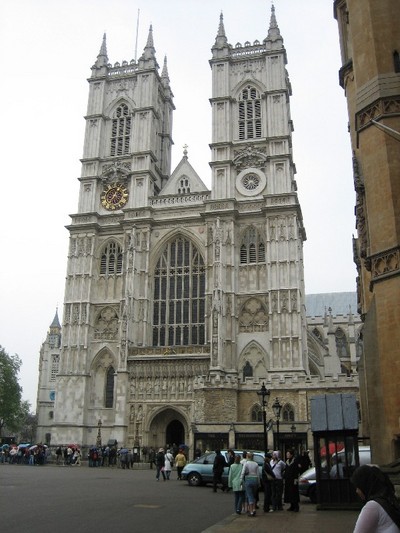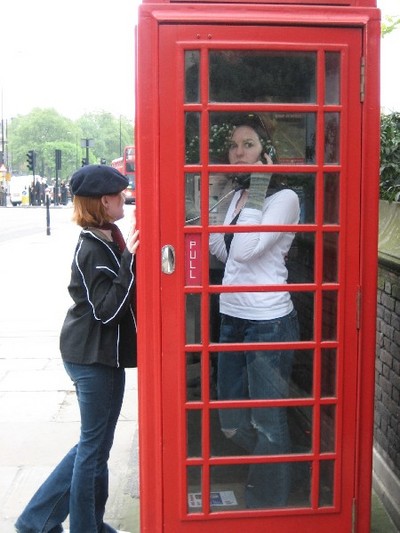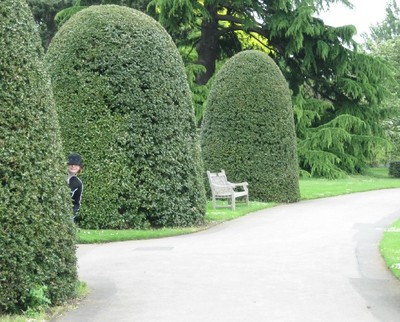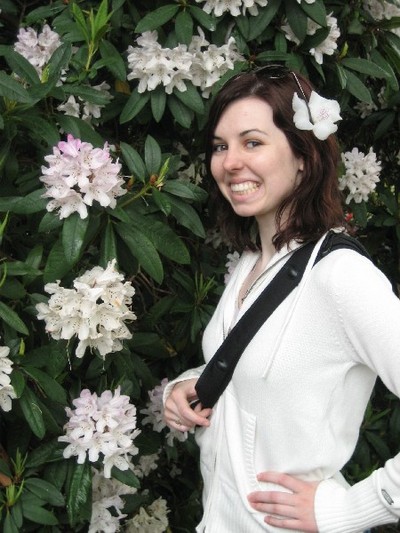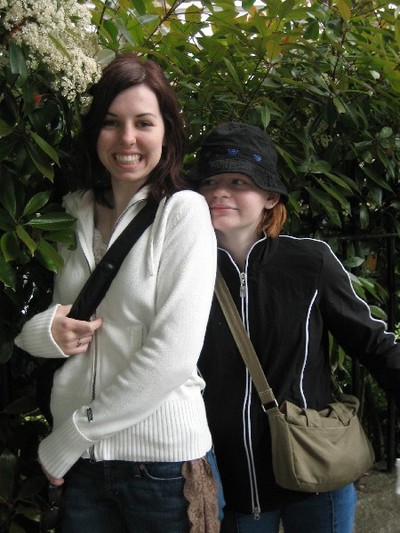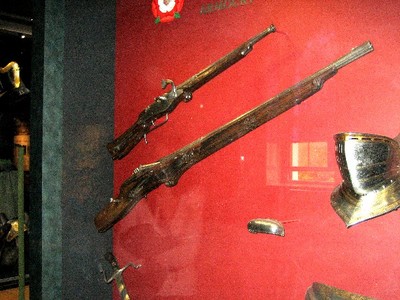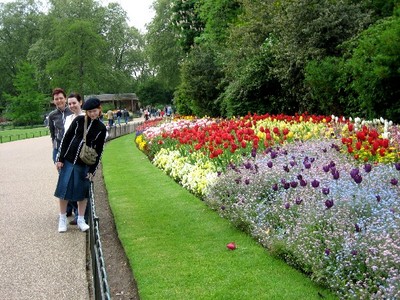Boun giorno from an Internet cafe in Firenza, or Florence as we know it. The past few days have been filled with adventure and sightseeing (and food stories, Good Name) but I haven’t written much about food yet. Instead, below you will find thoughts from our time here. There should be four different posts within this one, each “hidden” after the title. Click on the title to reveal the text and photos for that section. “Hide” at the end of the section and go on to the next, or not, as you wish.
Siesta Tuscany
Thursday afternoon. It is siesta time in Tuscany and I am sitting at a picnic table inside a small cave. The cave floor and walls are of flat stones and the ceiling is of brick. Inside the cave, besides myself, is an open hearth “barbeque” with a chimney and a washing machine. I will use the barbeque later, but right now I am doing laundry.
We’re traveling with one bag per person and only two of these are bigger than carry-on size, so laundry is a mundane fact of life on our exciting adventure. But do not feel as if I’ve been consigned to an afternoon of drudgery. As I look out of the mouth of the cave I see the green and gold hills of Tuscany, decorated with the distinctive tall, narrow cypress trees, a smattering of villas and fields full of grape vines and olive trees. A fresh breeze is in my face and two kilometers down the mountain from me the little village of Dicomano dozes. And at this moment an ant is crawling across the screen of my laptop. In my life I have certainly done laundry under much less aesthetic conditions.
This is my view:
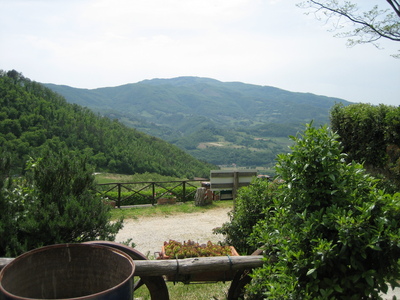
My family is also dozing, reading or floating in the swimming pool or some combination of these. We are at the Fattoria il Lago, near Firenze, a farm estate now involved in agriturismo. The farm is still a working olive farm and winery and once also raised cattle and sheep. It has been in the same family since around 1900. Many of the buildings have been converted to apartments. Our own very cozy apartment once housed sixty ruminants but now we enjoy three bedrooms, a large kitchen and living room area with fireplace, two bathrooms (one with shower, both with bidets) for roughly 300 euros a week. We had reserved a smaller place originally but because we arrived mid-week a larger apartment was available and Francesco, the manager, had upgraded us at no charge. Ah, la dolce vita.
We couldn’t really appreciate just how blessed we had been when we arrived this morning, just after midnight. It had been a very long day and the last 15 kilometers or so of the trip had been up a very twisting, narrow and often steep road. We had flown from London to Turin via EZJet for a very nice price, arriving in mid-afternoon. Because we were going to spend our time traveling around the smaller towns and cities of Tuscany I had prepaid for a rental car instead of relying on trains and buses. Plus, with four people in the party a car rental was more economical, especially because I used the Auto Europe consolidator service to book a compact, manual transmission car (with all the mandatory CDW and theft insurances needed in Italy) for €140 for the week. The deal had come with a free one car class upgrade, and when we arrived at the car rental counter (Europcar in this instance) we were handed the keys for a Mercedes. I asked the woman at the counter if there was an additional charge, and she said no, it was all as pre-paid. We went out to get the vehicle, thinking that Mercedes perhaps makes a compact car for Europe, but sitting in our spot was a Mercedes 280 with automatic transmission, leather seats, a/c – everything but cupholders (darn it!). Therefore this day in Italy began and ended with unexpected upgrades.
In between, the adventure wasn’t as comfortable, however. We had girded ourselves for the rigors of Italian driving, and accepted the wisdom of our guidebooks which said to simply accept that fact that you are going to get lost.
So far, driver behavior on the autostrade hasn’t been much different than in the U.S., though you can go much faster. We did, however, find ourselves getting sucked into both Turin (Torino) and Genoa (Genova) because we didn’t have the hang of following highway signs to cities beyond these turning points (and route number signs are much smaller and more infrequent than in the U.S.). The first diversion cost us about an hour and a half in Torino. After accidentally going into the city itself we thought we had found the road to Savona (on the way to Genova), but then weren’t so sure. We were also hungry, being well past lunchtime, so I pulled up to a small ristorante hoping for food and directions. Ideally, the food would be digestible and the directions understandable.
Inside we discovered there was no kitchen service because it was siesta, but there were prepared sandwiches that could be microwaved. We also discovered that no one spoke English. Nevertheless, I pointed to my map, and said, “Genova?” as hopefully as I could. What ensued was right out of a movie, except that if it had been in a movie everyone would have thought it was a shallow stereotype. The stocky, bullet-headed fellow behind the counter came out and took me to the front door of the place, pointing and gesturing first one way, then another. A second fellow, a young man in skinny sunglasses with the build and the clothing of a bicycle racer began to contradict the first man, interjecting his own hand motions and repeating the names of other towns. Then a slender, fiery and dark woman stepped in and with large chopping motions of her hands silenced the two men and began to point and explain another route, in the opposite direction. The men questioned her, but I understood her motions to mean it wasn’t as direct a route, but simpler to understand. As the three of them continued to argue about it I brought out my map and showed them that while we were looking for Genova, eventually we wanted to get to Viareggio, followed by a turn inland to Firenze, from where we would work our way further into the mountains to Dicomano and then our apartment.
Ah, well – that’s different! They gathered around the map, using pens to draw different routes and continuing to argue amongst themselves. Meanwhile the Reverend Mother and the girls ordered gelati and watched. Finally a consensus was reached, and directions were given to get on the proper route. These last details almost worked, but we still had to stop once more in order to find the A26. Then, we were on our way, bombing down the autostrade in our Mercedes, enjoying the spectacular scenery and frequent tunnels through the mountains. Until we got to Genova, that is, where we were again sucked off course and into the city. This time we lost perhaps 30 minutes before finding our way onto the A12 for Viareggio. We had lovely glimpses of the ocean, but it was also getting dark and I knew that our trip, originally to take four hours, was now going to be much longer and that we’d have to finish it in the dark. I thought it would be a good idea to notify our host that we were running very late but I had trouble finding pay phones along our route that were in working order. Gad! How we’ve come to take cell phones for granted! (Americans do not seem to be alone in this; just about everyone I’ve seen in Italy so far has a cigarette in his/her mouth and a cell phone against his/her ear).
Finally we reached Firenze around 11 p.m., but I found a few businesses that were still open, along with helpful people who offered their own phones to me so I could call the farm. When I finally made contact with Francesco he told me how to find our apartment once we got to the farm and that he’d leave the keys in the door for me. Then we made our long, twisty climb up roads that got progressively smaller and more twisty as I was getting progressively more tired. We arrived, unloaded the car in a rush, divvied up bedrooms and crashed.
When we awoke late this morning it was to bright sun, warm temperatures and the kind of vistas out of our windows that already have us in a mind to sell everything back home and move here permanently. We set out for Dicomano, but first had to get past an imperious pheasant that had positioned himself in the middle of the driveway and wouldn’t budge. I almost expected him to say, “€2, please.” He eventually sauntered off and we were able to enjoy a late breakfast or early lunch at a small place in Dicomano before walking around the village and noting the roses growing in gardens and, in some cases, from the walls of alleys. We looked at the shops and stood on a bridge overlooking a wide stream with many trout swimming around. It does feel like paradise, but even paradise has its snakes. The information book in our apartment tells us to be alert for vipers on the walking and biking trails. Oh well, we’ll risk it.
After we returned and as I gathered up laundry in our bedroom a large bee flew in through an open window. The upper story windows are shaped like half-circles and crank open from the top (no screens). The bee buzzed the room repeatedly trying to find a way out and finally wound up back at the window, but well below the opening. Nevertheless it kept beating its head against the glass trying to get back to the hills. As I stuffed dirty clothes into bags I could hear it buzzing and bumping. I figured it would either find its way or die trying but as I left the room I thought of how many times the day before I felt as if I were beating my head against the windshield in front of me, and how helpful everyone had tried to be, even if we couldn’t quite understand each other.
I dropped the bags, grabbed a cup and small magazine and quickly captured the rover and then lowered him to freedom outside the window. I’m not positive, but I think I almost heard him, or someone, say “Grazi.”
The road to Castrocaro
Friday. We are diving and climbing our way along SS 67, the route from Dicomano to Forli. SS 67 is a “green” road on the map, meaning it is a two-lane in generally good shape and, unlike the autostrada, it is toll-free. You could say the road hugs the mountains but the relationship is more standoffish, I think. It is more apt to say that the road and the mountain take turns playing hard-to-get.
Taking this road requires alertness, good reflexes and an ability to handle 160-degree turns, and the S-turns, N-turns and X, Y and Z-turns I mentioned earlier. From past experience we know that this is the type of road that makes my wife carsick if she doesn’t have a steering wheel to hang onto and steady herself, so I yield the keys of the powerful Mercedes to her, even though I know that it will cause any Italian males we come across to question my manhood.
The drive also requires a lot of film or a digital camera with lots of memory. Our progress is stopped regularly early in the trip as every five minutes or so we see something that requires us to stop and snap a photo.
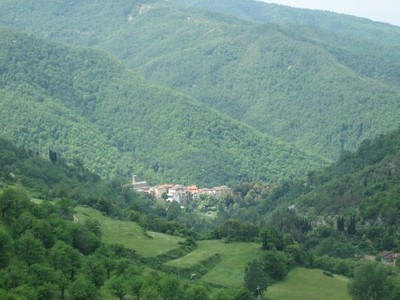
Interspersed regularly along the way are highway signs warning of hazards. Sometimes it’s as simple as a single, large exclamation mark; other times it is a “falling rocks” image, or sometimes a silhouette of a cow.
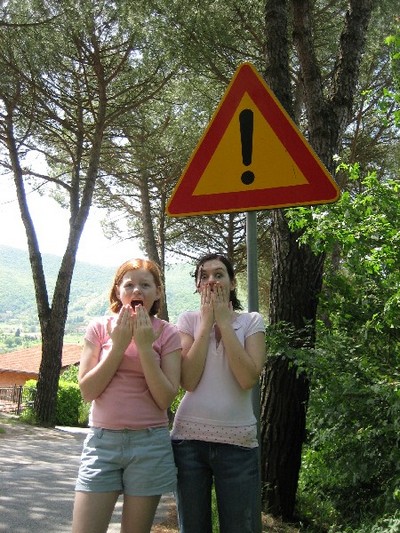
Someone wonders why we don’t see signs for falling cows. I say it’s because the cows are holding on for dear life. My wife observes that cows can’t hold on because they don’t have opposable thumbs. Hmmm.
“Okay, watch for falling cows,” I say.
There’s no reason to go to Forli other than we decided over our morning cappuccinos that we’d rather see scenery than cities, even though Tuscany boasts great cities such as Pisa, Siena and Florence. Almost at random we picked Forli with the idea that if we made good time we could get all the way to Ravenna and get a glimpse of the Adriatic coast of Italy as well. As our drive goes on the scenery is so uniformly spectacular that we quit stopping at nearly every curve. We are getting used to it. We are also almost getting used to the oncoming suicide packs of motorcyclists who sweep around the curves in front of us with their left knees brushing the center stripe before buzzing away to our rear. We almost get used to it.
We pass through dozens of tiny villages such as San Godenzo, San Benedetto di Alpe, Bocconi and others that barely show up on the map. The buildings in these towns often come right down to the edge of the road, sometimes even closer to us than the motorcycles. I’m serious, there is no shoulder, let alone a sidewalk, not even a front step to speak of; just a stone building or a series of buildings on either side of this route; only a few bear scars on their corners. Each town has its charms and reasons to pause but we mainly settle for a slow cruise through the town. That is, until we got to Dovadula. What a little jewel! On either side of SS67 the main drag of town is flanked by the tall trees that form both a palisade and an arch over the road. We have to stop.
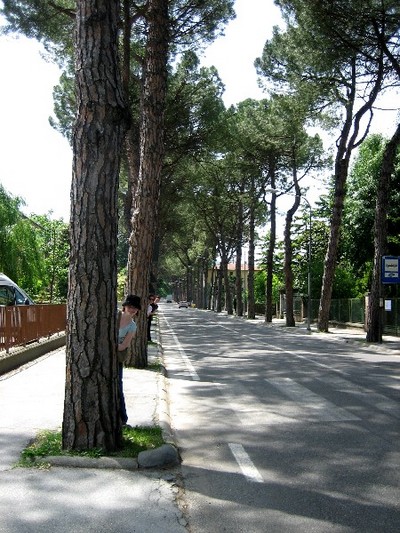
We walk around the town for about 45 minutes which is about all it takes to see just about everything. It is a lovely town even with its streets mostly deserted at midday. A castle ruin stands almost at the end of town as if to try to keep us from leaving. It is difficult but we do so anyway.
We’re nearly to Forli when we enter the town of Castrocaro and, coming around a curve, we’re suddenly aware of the medieval fortress on a hill dominating the town and the view just as it has since the 10th century. We’ve got to see this, and veer off into the town, seeking the high ground that will take us near the ruins that are still formidable despite the disrepair. As we walk the last bit of the way it isn’t hard for me to imagine the discouragement of trying to stagger up this hill under a rain of arrows and other weapons in order to assault this stronghold with little more than my bare hands and bare steel.
The castle, which functioned from the 10th until the 16th century, defending the region’s breadbasket, is in the process of being restored and we promptly kicked in the 17 euros requested for us to tour the grounds, which we discover we have to ourselves. Once inside the futility of attack is even more apparent when you walk the battlements or tour the inner walls and guard rooms. The castle was essentially obsolete and abandoned, however, with the advent of the iron cannonball. Nevertheless, it is easy to picture the power the castle projected when you stand on top of the power and look out over the courtyard with its chapel, past the curtain wall and onto the plains below.
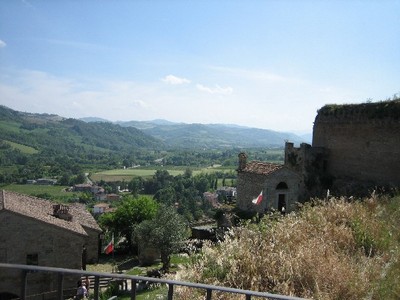
We spend much of the rest of the afternoon exploring the castle and grounds and because of the lateness of the hour turn back for Dicomano, but not before the Mall Diva, as originally promised from the battlements of the Tower of London, “taunts us a second time.”
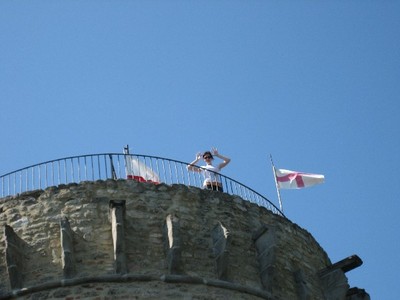
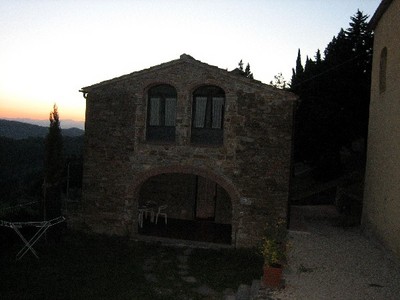
Beato Angelica
When we arrived back at our “apartment” Friday evening it was with a bit of sadness that we’d have to be leaving in the morning. At the time I’d made our reservation the availability was only until the weekend, after which all the apartments (houses) were rented for the ensuing week.
Beato Angelica is the nicest of the rentals and we had been given it at no additional charge when we arrived. Its solid stone walls, terracotta tile floors and large rooms had been very comfortable and I knew we were unlikely to find accommodations as good the rest of the trip. I asked Francesco Friday night if there had been any cancellations, but sadly the answer was no. Saturday morning we were fully packed and the car was half-loaded when one of the staff trotted up to my wife (who was outside) with a cell phone (there are no phones in any of the units). Immediately there was some concern; only my family members had any idea exactly where we were, so a phone call was definitely unexpected.
Rather than bad news, however, it was Francesco calling to say that the family that had reserved Beato Angelica had just called and cancelled due to illness. The “apartment” was ours for as long as we wanted if we wished to stay. We discussed it for about a minute and signed up for at least the rest of the weekend. We had again experienced an unexpected blessing, and lost little time in unloading and revising our plans for seeing more of this incredible region.
Old men in the market
With our newfound lease on la dolce vita, we headed into Dicomano to re-supply our kitchen before leaving on a day trip to Pisa. We hadn’t realized, however, that Saturday morning is market day in Dicomano.
The town square and surrounding streets were closed to vehicles and filled with booths and stalls from various vendors. It wasn’t really an agricultural market though one vendor sold vegetables and another sold live chickens. Instead merchants sold pots and pans, others sold bolts of cloth, while others sold jeans and sweatshirts. To the Mall Diva’s delight, there were even a couple of “shoe stores.” The delicious smells of roasted chickens and porketta also filled the square as well. The citizens in little Dicomano, high in the hills of Tuscany, don’t need to go to the mall; the mall comes to them.
We weren’t going to miss this, so we delayed our trip to Pisa and started off by visiting our favorite little cappuccino store, located on one corner of the square, for our morning dose. As we ordered, the girls found seats inside because it was cool and breezy outdoors at the time. I, however, had spotted a couple of groups of old men sitting on the outdoor patio and enjoying market-day. I moved outside and sat down between the two groups so I could sip my coffee and watch and listen.
Dicomano is a town of about 3,000 people and it was easy to tell that the men in the respective groups were well-acquainted with each other. In the group to my left one gentleman in a red scarf or oversized ascot was telling stories, freely using his hands and some amazing facial expressions. His three comrades were nearly in tears with laughter. To my right two other gentlemen were seated while a third stood as they conversed. Both groups were nattily dressed for the most part, with almost all the men in sportcoats with sweaters and many wearing ties as well, and their hair was well-combed and even pomaded.
The standing gentleman to my right looked to be about seventy and was especially dapper in his brown and green houndstooth jacket and light blue sweater. His speech was not nearly as expressive as the red ascot guy in the first group, but as he spoke he frequently reached out and touched his friends on the shoulder or arm, or even stroked their hair.
This caused me to notice his hands and, in turn, the hands of the other men on the patio. All were gnarled and twisted, often dark and tobacco-stained, but not so abused by their life’s work that they couldn’t tie their ties this morning.
I can only imagine – though that is a fun exercise in and of itself – what they were saying to each other, or the lives they had lived to this point, and the bonds that had been formed between them in this little town. They were of an age to have lived through the war and no doubt missed their brothers who, for one reason or another, were no longer at the table with them on a fine Saturday morning to drink espresso, remind each other of loves lost and won, and to bring their vast, collected wisdom to bear on the problems of the day.
Some 10 hours later we drove through this same square after returning from Pisa and the merchants and old men had all gone, the void filled by a couple hundred young people who had gathered together for their own rituals and traditions nearly as old as the village. Most of the men I had seen that morning had probably spent many a Saturday night in this square in their youth; many of these youth might find themselves, 50 or 60 years hence, sitting in chairs in this same square on a Saturday morning, sipping espresso and talking about a night back in 2006 when it seemed as if the whole world was all tied together in one little square in one little town so far away from everything else and yet so near.
We will finally depart from Fattoria il Lago tomorrow, Monday morning. Our plan is to head for the famous “Cinque Terre”, or “five lands” that cling to the cliffs overlooking the coast near Genova. We are to return to London on the 24th, but will be there only long enough to pick up a couple of new stamps on our passports and a rental car.
Today we’ll soak up some more sun in Firenze (and we already have a story to tell about this).
